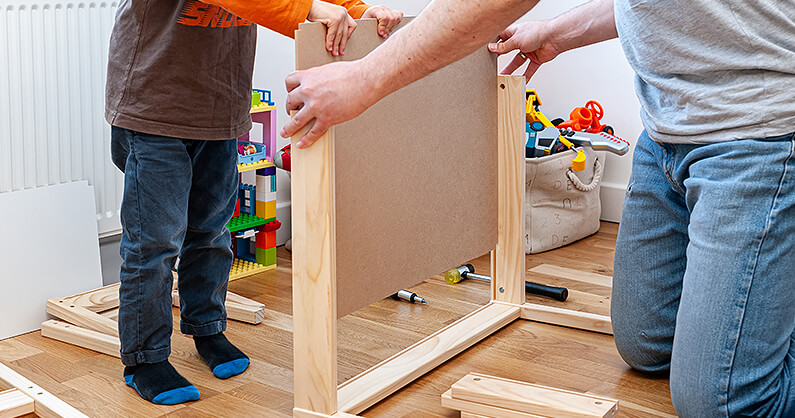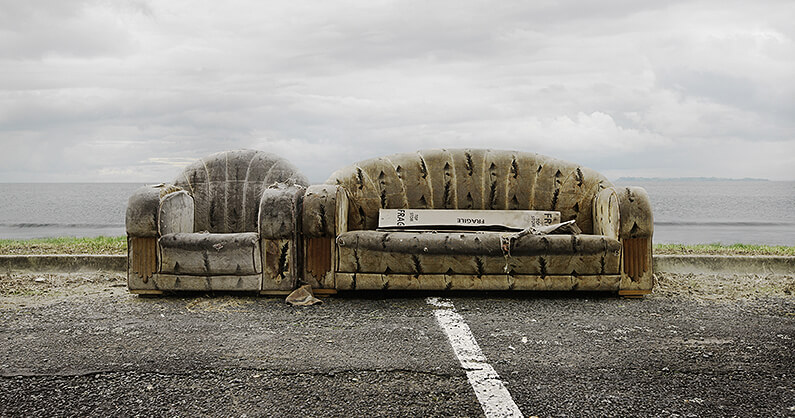Furniture waste statistics: A deep dive into the numbers
Waste management is a topic that concerns all of us, especially when the discussion zeroes in on reductions in our waste so that our carbon footprint is drastically reduced and the particular type of waste we are focussed on in this blog is furniture.
Furniture waste is rising alarmingly worldwide, but to understand the problem and potential solutions, we must break down the data. Let's examine the statistics on furniture waste, primarily in Australia, and draw comparisons with the United States.
The Australian perspective
Household waste
Recent data paints a revealing picture: based on a survey of 2,500 metropolitan households in Australia, each disposes of an average of 24kg of wooden furniture annually. When you extrapolate these numbers to account for the Greater Sydney Region's 2 million households, the figures are staggering:
- 48,000 tonnes of furniture are discarded at the kerbside per year.
- This translates to 800,000 three-seater sofas, 1.65 million dining tables, 3.4 million coffee tables, and a whopping 6.85 million chairs disposed of annually.
Yet, amidst the grim numbers, there's a positive trend: Australians are increasingly choosing to reuse furniture (approximately 75%) over disposal (around 25%). This shift from disposal to reuse systems, backed by data from Gumtree, implies that more items are being saved from landfills, a very pleasing trend.
If you have furniture that you want to remove, move or donate, you can use a reliable furniture removalist service like us.
Charity and online marketplace sector
Charities play a significant role, with estimates suggesting they receive between 151,000 – 203,000 tonnes of furniture/home furnishings annually.
Moreover, the thriving online marketplace in Australia sees about 25 million home décor and furniture items traded each year.
This, in addition to the donations made to charity, translates into a bonanza in recycling. Donated items to charitable organisations like Lifeline or Vinnies can end up recycling furniture to families less able to afford new but also those happy to be able to put these items to good use for years to come. A win/win all around.
Mass-produced furniture and the impact on waste

Australia's inclination towards cheap, mass-produced furniture significantly contributes to the country's furniture waste. While these items are accessible and affordable, about 85% of such furniture ends up directly in landfills mostly because they are made to last a couple of years with a short shelf life rather than lasting a lifetime.
Furthermore, companies like IKEA, leading the flatpack furniture trend, have become synonymous with this mass-production model.
The result?
Aussies spending over $1.5 billion on furniture annually. The use of multiple materials in mass-produced furniture has in itself created a problem for recyclers negating any advantage that might be had in reducing waste.
Government initiatives on furniture waste in Australia
Government-backed initiatives, like the one by Good Environmental Choice Australia, Edge Environment, and the Global Product Stewardship Council, aim to redirect furniture waste from landfills.
Their goal?
Preventing 30,000 tonnes of usable office furniture from ending up as waste. Office furniture usually has a remarkable reuse rate due to its often robust construction and can find a new home with little effort, particularly in new startups. Office furniture removals can be affordably engaged by using a reliable furniture removalist service.
USA: The fast furniture crisis
Comparatively, the situation in the USA underscores the global nature of the problem. The EPA has provided startling statistics:
- 12.2 million tons of furniture waste in 2017, with a staggering 80.2% landing in landfills.
- Only a paltry 0.3% of the disposed furniture waste was recovered for recycling.
- A culture of "fast furniture" is partly to blame. These quickly outdated, low-quality items are often discarded rather than repaired or sold.
Furthermore, the office space transition, especially with more people working from home, might increase the already hefty 8.5 million tons of office furniture waste annually. Most of the statistics underpin a mindset of “chuck it” rather than reuse or donate it.
What can I do to help reverse the trend

- Look into buying older more solid furniture
- Browse the op shops for that special piece that you are looking for
- Research methods for renovating furniture
- Do a class based on furniture restoration
- Visit a men’s shed where furniture restoration is carried out
- Try building your own furniture from solid timber
- Ask friends or relatives if they have any items that they are getting rid of
- Take a class on furniture construction or woodturning
- Keep an eye on online sites for second-hand furniture like Marketplace or Gumtree
- Engage a trusted furniture removalist service to do the heavy lifting for you
In conclusion
While furniture waste continues to be a significant concern in Australia and the USA, the data also reveals some silver linings. The trend of reusing and recycling furniture, particularly in Australia, is heartening. However, as consumers, our choices can drive change. It is up to us to resolve to make refurbishing those items of furniture a family project rather than dumping them.
Opting for sustainable furniture, considering second-hand purchases, taking up the challenge of refurbishing older solid furniture and supporting charities and reuse initiatives can play a significant part in combating the issue.
If we're to leave behind a greener, cleaner planet for future generations, addressing furniture waste is one step among many, but a crucial one. After all, as the data shows, every chair, table, and sofa counts.

